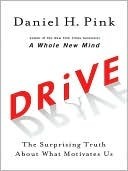More on this book
Community
Kindle Notes & Highlights
Read between
March 22 - April 3, 2025
“When money is used as an external reward for some activity, the subjects lose intrinsic interest for the activity,” he wrote.5 Rewards can deliver a short-term boost—just as a jolt of caffeine can keep you cranking for a few more hours. But the effect wears off—and, worse, can reduce a person’s longer-term motivation to continue the project.
In other words, rewards can perform a weird sort of behavioral alchemy: They can transform an interesting task into a drudge. They can turn play into work. And by diminishing intrinsic motivation, they can send performance, creativity, and even upstanding behavior toppling like dominoes. Let’s call this the Sawyer Effect.
Only contingent rewards—if you do this, then you’ll get that—had the negative effect. Why? “If-then” rewards require people to forfeit some of their autonomy.
“Goals may cause systematic problems for organizations due to narrowed focus, unethical behavior, increased risk taking, decreased cooperation, and decreased intrinsic motivation. Use care when applying goals in your organization.”
CARROTS AND STICKS: The Seven Deadly Flaws 1. They can extinguish intrinsic motivation. 2. They can diminish performance. 3. They can crush creativity. 4. They can crowd out good behavior. 5. They can encourage cheating, shortcuts, and unethical behavior. 6. They can become addictive. 7. They can foster short-term thinking.
“Rewards do not undermine people’s intrinsic motivation for dull tasks because there is little or no intrinsic motivation to be undermined.”
where “if-then” rewards are a mistake, shift to “now that” rewards
for creative, right-brain, heuristic tasks, you’re on shaky ground offering “if-then” rewards. You’re better off using “now that” rewards. And you’re best off if your “now that” rewards provide praise, feedback, and useful information.
Type I behavior depends on three nutrients: autonomy, mastery, and purpose. Type I behavior is self-directed. It is devoted to becoming better and better at something that matters. And it connects that quest for excellence to a larger purpose.
Type I behavior emerges when people have autonomy over the four T’s: their task, their time, their technique, and their team


